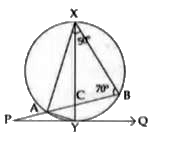If the n-th term of an arithmetic progression is 5n+3, then 3rd term of the arithmetic progression isSolution in Kannada
11
18
12
13
The correct Answer is:B
Step by step video, text & image solution for If the n-th term of an arithmetic progression is 5n+3, then 3rd term of the arithmetic progression is by Maths experts to help you in doubts & scoring excellent marks in Class 10 exams.
Topper's Solved these Questions
- BOOK - ZEN PUBLICATIONCHAPTER - ARITHMETIC PROGRESSIONSEXERCISE - ZEN ADDITIONAL QUESTIONS (VERY -SHORT-ANSWER [VSA] QUESTIONS)11videos
ARITHMETIC PROGRESSIONS
- BOOK - ZEN PUBLICATIONCHAPTER - ARITHMETIC PROGRESSIONSEXERCISE - ZEN ADDITIONAL QUESTIONS (SHORT-ANSWER [SA] TYPE 1 - QUESTIONS)24videos
ARITHMETIC PROGRESSIONS
- BOOK - ZEN PUBLICATIONCHAPTER - ARITHMETIC PROGRESSIONSEXERCISE - TEXTUAL EXERCISE (Exercise 1.4)5videos
ARITHMETIC PROGRESSIONS
- BOOK - ZEN PUBLICATIONCHAPTER - AREA RELATED TO CIRCLES EXERCISE - ADDITIONAL QUESTIONS (HIGHER ORDER THINKING SKILLS)7videos
AREA RELATED TO CIRCLES
- BOOK - ZEN PUBLICATIONCHAPTER - CIRCLESEXERCISE - ZEN ADDITIONAL QUESTIONS ( HOT [HIGHER ORDER THINKING SKILLS] - QUESTIONS) (IIT AND IMO)9videos
CIRCLES
Similar Questions
Find 'd' in the following arithmetic progressions:
i] 2, 5, 8, 11, 14 .......
ii] -3, -1, 1, 3, .... ..
iii] 0, -8, -16, ......
iv] 12,32,52,….05:39View SolutionWrite the nth term of the AP:
a] 13,8,3,−2,…..
b] √2,3√2,5√2,…..
c] 121,117,113,…..
d] 34,54,74,….
e] −15,−10,−5,0,….....04:03View SolutionWhich term of the A.P.: 121,117,113,..... is its first negative term?
02:40View SolutionFind the area of the shaded region portion in the given figure if E is the midpoint of AB,AGE and BEF are quadrants, and DOC is a semicircle.
 00:35View Solution
00:35View SolutionIn the adjoining figure, XY is a diameter of the circle and PQ is a tangent to the circle at Y. Given that ⌊AXB=50∘ and ⌊ABX=70∘, calculate ⌊BAY and ⌊APY.
 02:42View Solution
02:42View SolutionThe sums of n terms of two arithmetic progressions are in the ratio 5n+4:9n+6. Find the ratio of their 18thterms.
02:24View SolutionThe sum of n terms of two arithmetic progressions are in the ratio 5n+4:9n+6. Find the ratio of their 18th terms.
02:23View SolutionIf seven times of 7th term of an Arithmetic Progression is euqal to the 11 times of 11th term of it, then find the 18th term of that Arithmetic Progression.
07:24View SolutionIf the n-th term of an arithmetic progression is 5n+3, then 3rd term of the arithmetic progression is
01:59View SolutionIf the sum of the first 100 terms of an arithmetic progression is −1 and the sum of the even terms is 1, then the 100th term of the arithmetic progression is
04:29View SolutionIf the n-th term of an arithmetic progression is 5n+3, then 3rd term of the arithmetic progression is
08:28View SolutionIn an arithmetic progression, the 24th term is 100. Then the sum of the first 47 terms of the arithmetic progression is
04:35View SolutionThe sums of n terms of two arithmetic progressions are in the ratio 5n + 4 : 9n + 6. Find the ratio of their 18th terms.
04:35View SolutionThe sums of n terms of two arithmetic progressions are in the ratio 5n + 4 : 9n + 6. Find the ratio of their 18th terms.
02:43View SolutionThe sums of n terms of two arithmetic progressions are in the ratio 5n + 4 : 9n + 6. Find the ratio of their 18th terms.
04:29View Solution
